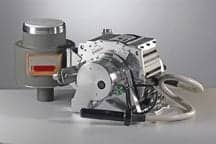 |
| Clinical equipment management systems can help departments manage and document their medical equipment inventory, track corrective and preventive work orders, and create real-time documentation required for regulatory compliance. |
Maintaining continuous Joint Commission survey readiness is possible only if the organization strives for continuous compliance with The Joint Commission standards every day. It also helps the organization prepare for the annual periodic performance reviews (PPRs).
For biomedical/clinical engineers it requires continuous compliance with the two (EC.02.04.01 and EC.02.04.03) primary Joint Commission medical equipment standards besides the other relevant standards. This article will review how to achieve continuous compliance with EC.02.04.01. The next articles will discuss how to achieve continuous compliance with the second primary standard, EC.02.04.03, and other relevant standards.
EC.02.04.01 EP 1
This EP requires user and maintainer input in the equipment selection and acquisition process. Institutional policies must be in place and followed that require biomedical/clinical engineering to be part of the equipment committee or other facility equipment selection processes. Biomedical/clinical engineering should provide input based on the maintenance history of a particular equipment type, reliability, experience with vendors, availability of parts/service, maintainer training, etc.
EC.02.04.01 EP 2
This EP requires keeping an accurate and current written inventory of medical equipment. It is a challenging requirement that necessitates ongoing efforts on the part of both users and maintainers of medical equipment, as well as the department that orders and receives medical equipment at the institution.
Institutional policies must be in place and followed that require the users and other hospital staff to notify biomedical/clinical engineering about inspection and evaluation regarding any new equipment (irrespective of its ownership) that is brought into the patient environment. Periodic, such as weekly and/or monthly, audits of all areas should be conducted to ensure that all equipment used has been evaluated and initially inspected by biomedical/clinical engineering.
EC.02.04.01 EP 3
This EP requires having maintenance strategies identified for all the items on the medical equipment list. The most commonly identified strategies are interval-based inspections, corrective maintenance, or metered maintenance. It is important that all items have a maintenance strategy that ensures the reliable performance of equipment. Common problems include medical equipment used in the facility without any maintenance strategy identified or the identified strategy not followed. Periodic (weekly/monthly) audits of all areas should be conducted to ensure that all equipment has a maintenance strategy that is followed and documented. New strategies, such as predictive maintenance and reliability-centered maintenance, should be looked at based on maintenance history and data analysis.
EC.02.04.01 EP 4
 |
| A challenging requirement, EC.02.04.01 EP 2 requires keeping an accurate and current written inventory of medical equipment. |
This EP requires identification in writing of the frequencies of maintenance and testing for medical equipment in the inventory. It is difficult to determine the optimal frequency of maintenance and follow it. Excessive maintenance can increase the workload without improving equipment reliability. It is important to determine the correct interval based on manufacturer recommendations, risk levels, and organizational experience. Usually, the preventive maintenance intervals recommended by the manufacturer are excessive, and they need to be rationalized based on organizational experience and using maintenance strategies like predictive maintenance or reliability-centered maintenance.
EC.02.04.01 EP 5
This EP requires the organization to monitor and report all incidents in which medical equipment is suspected in or attributed to the death, serious injury, or serious illness of any individual, as required by the Safe Medical Devices Act of 1990. Institutional policy must be in place that requires the users and other hospital staff to follow and notify biomedical/clinical engineering about any medical equipment-related incident. Educational sessions should be conducted to remind the staff to follow the policy. Root cause analysis should be conducted after each incident, and the policy should be reviewed for comprehensiveness.
EC.02.04.01 EP 6
|
Find past CCE Prep and ICC Prep columns in the 24×7 archives. |
This EP requires the hospital to have written procedures to follow when medical equipment fails, including using emergency clinical interventions and backup equipment. Institutional policies must be in place and periodically reviewed following a medical equipment failure. These policies must be developed by users (as they are the first point of contact when equipment fails) and maintainers.
Arif Subhan, MS, CCE, is the chief biomedical engineer, VA Nebraska-Western Iowa Health Care System, Omaha, Neb; adjunct assistant professor, biomedical engineering, University of Connecticut; and a member of 24×7’s editorial advisory board. For more information, contact .
Review Questions
- Maintaining continuous Joint Commission survey readiness is possible only if the organization ____.
- Strives for continuous compliance with the Joint Commission standards every day
- Conducts annual periodic performance reviews (PPRs)
- Reviews the program every 3 years
- Assesses compliance with the standards every 2 years
- The responsibility of keeping a current medical equipment inventory is the responsibility of ____.
- Users of medical equipment
- Maintainers of medical equipment
- The department that orders and receives medical equipment
- All of the above
- The Joint Commission standards require the input of the ____ in the equipment selection and acquisition process.
- Users of medical equipment
- Maintainers of medical equipment
- Manufacturers of medical equipment
- Answers A and B
- Biomedical/clinical engineering should provide input on equipment selection based on ____.
- Maintenance history with a particular equipment type
- Experience with vendors
- Availability of parts/service
- All of the above
See the answer
See the answer
See the answer
See the answer



